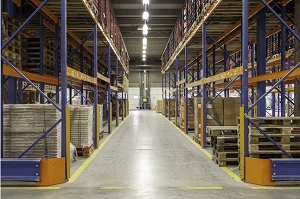Modern architecture is constantly evolving, driven by the changing needs and aspirations of society. One of the key elements that have gained prominence in this evolution is the innovative use of mezzanine floors. Mezzanine floors, characterized by their partial or intermediate levels between the main floors of a building, have become a prominent feature in contemporary architecture due to their versatility, adaptability, and ability to optimize space utilization. This essay delves into the multifaceted applications and benefits of mezzanine floors in modern architecture, examining how they contribute to spatial efficiency, aesthetic enhancement, and functional adaptability. While considering a range of real-world examples, this essay underscores the pivotal role of mezzanine floors in shaping the modern built environment.
Spatial Efficiency and Optimization:
Mezzanine floors are a solution born out of the necessity to make efficient use of available space. As urban areas grow increasingly dense and land becomes scarcer, architects and designers are compelled to explore innovative ways to maximize the utility of every square meter. Mezzanines provide an effective solution by capitalizing on vertical space that might otherwise go unused. By creating an additional level within a building without extending its footprint, mezzanine floors offer an elegant solution to the space crunch. This is particularly valuable in retail settings, warehouses, offices, and even residential spaces where spatial efficiency is a prime concern.
In retail environments, for instance, mezzanines enable retailers to create additional display areas without expanding their stores' physical size. This allows them to showcase more products and engage customers with a dynamic, multi-level shopping experience. Similarly, in industrial warehouses, mezzanine floors can be utilized to store goods, maximizing the vertical height of the space and freeing up the ground area for other functions. This optimization of vertical space is a hallmark of modern architecture's response to the challenges posed by urbanization.
Aesthetic Enhancement and Flexibility:
Mezzanine floors are not only utilitarian; they also contribute significantly to the aesthetics of a space. Their structural design and placement can add visual interest and dynamic elements to an otherwise monotonous interior. Architects leverage the design potential of mezzanine floors to create visually appealing compositions that draw the eye upwards, effectively breaking the monotony of a large open area. This design strategy is particularly relevant in commercial spaces, where the ambiance and aesthetic appeal contribute to the overall brand experience.
Furthermore, mezzanine floors offer flexibility in terms of design styles. They can be incorporated seamlessly into various architectural contexts, ranging from minimalist and industrial designs to more traditional or even avant-garde themes. The choice of materials, railings, lighting, and spatial configuration allows architects to craft a unique atmosphere that aligns with the intended purpose of the space. This adaptability makes mezzanine floors a canvas for creative expression in modern architecture, enabling designers to meld functionality with aesthetics.
Functional Adaptability:
Mezzanine floors excel in their ability to adapt to a variety of functions and purposes. Their versatility is evident in the diverse range of applications across different sectors. In offices, mezzanines can provide quiet workspaces, collaborative zones, or breakout areas, effectively maximizing the utility of limited floor space. In residential contexts, they can be used to create loft bedrooms, home offices, or cozy reading nooks. This adaptability to varying needs is a testament to the flexibility that mezzanine floors offer, allowing spaces to evolve along with the changing demands of users.
Furthermore, mezzanines facilitate the concept of mixed-use spaces, where different functions coexist harmoniously within the same area. For instance, a café might have a mezzanine level dedicated to bookshelves and reading spaces, fostering an environment where visitors can socialize, work, and relax within the same establishment. This adaptability aligns with modern lifestyle trends that prioritize multifunctional spaces capable of accommodating diverse activities.
Real-World Examples:
Numerous real-world examples illustrate the diverse applications of mezzanine floors. One notable instance is the adaptive reuse of historic industrial buildings. In cities around the world, former factories and warehouses have been transformed into trendy loft apartments, offices, or mixed-use spaces. Mezzanine floors play a pivotal role in these conversions, providing additional living or working areas while preserving the industrial charm of the original structures.
In the commercial realm, mezzanine floors are commonly seen in shopping malls, where they house specialty stores, restaurants, or entertainment areas. These elevated spaces create a sense of exclusivity and curiosity, encouraging customers to explore and discover. Additionally, the use of mezzanines in galleries and museums allows curators to exhibit artworks at different levels, enhancing the visual experience and creating a dynamic flow for visitors.
Conclusion:
The exploration of mezzanine floors in modern architecture unveils their multifaceted significance in reshaping the built environment. These intermediate levels efficiently optimize vertical space, addressing the challenges posed by urbanization and space constraints. Moreover, their aesthetic contribution cannot be understated, as they introduce visually appealing elements and design versatility to various contexts. The functional adaptability of mezzanine floors aligns with contemporary lifestyle demands, enabling spaces to evolve and cater to changing needs.


No comments yet